Love Live! Sunshine!! Season 2 Review
It is extremely hard to deny the impact that the original series of Love Live! had, with the show quickly becoming one of the most popular idol franchises of the past decade: an impact so hard that it could be very much felt within Sunshine’s first season, from its overall plot to the archetypal character designs. It’s now in this second season where it feels like it is emerging out of that shadow, taking its own direction and with it giving itself so much more potential than the original ever had.
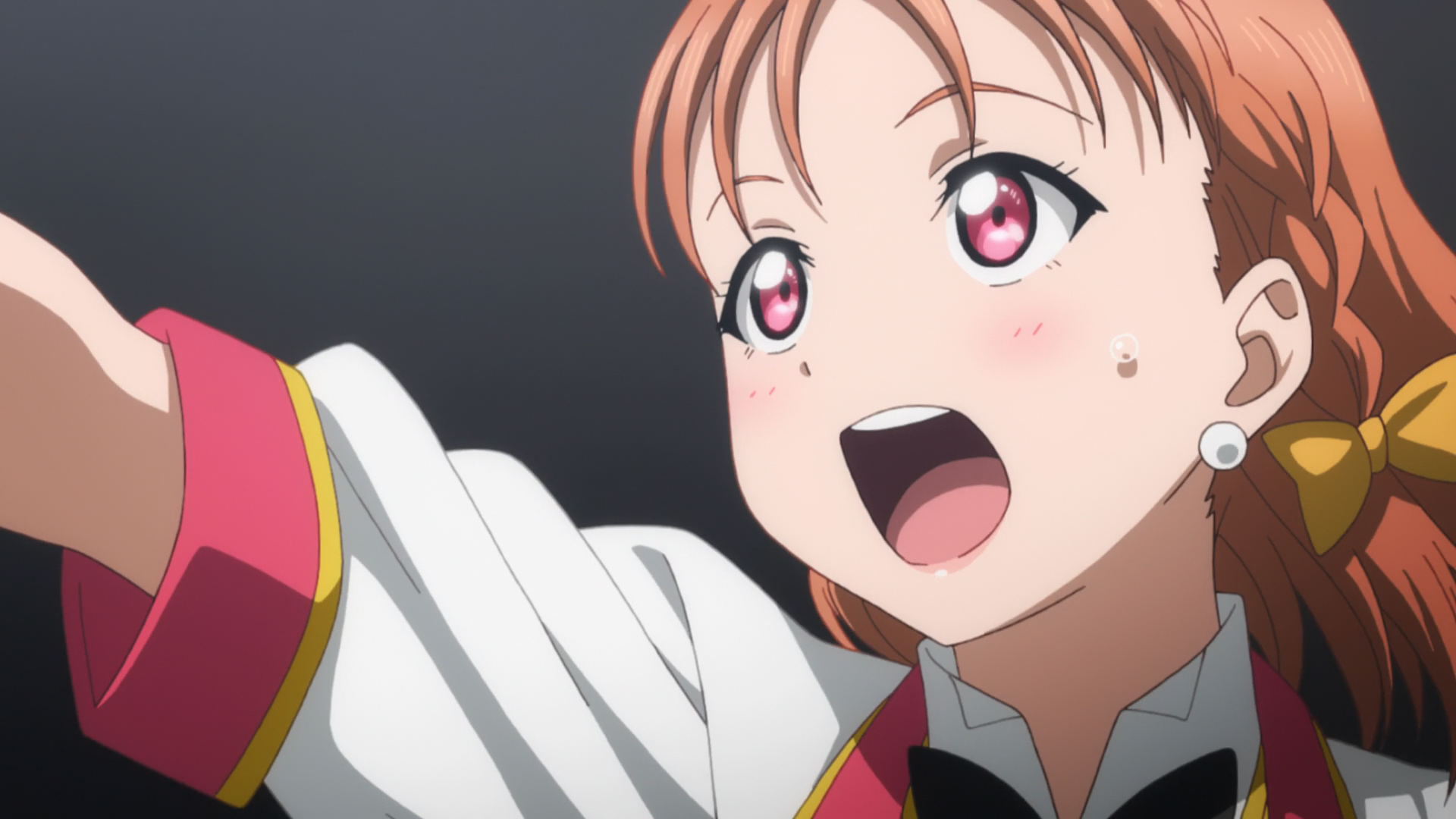
Despite Aqours’ fantastic performance last time out, we quickly learn that they failed to make it through to the next stage, which has left each of the girls in a state of doubt over whether they should continue. While the answer is an obvious “yes”, it comes with a big kick up the backside as the plans for the closure of their school are accelerated and the upcoming open day, which they had just begun to gear up to perform at, is suddenly cancelled. While Mari manages to persuade her father to re-organise it, it comes with the condition that they must get 100 prospective students before the day after the event or the school will close. And that’s the least of their problems, as it turns out that Love Live! regional qualifier is on the same day! With the pressure ramping up and time running out, the members of Aqours must now decide whether they want to chase glory at Love Live! and immortalise their school’s name, or take one last chance on keeping it open.
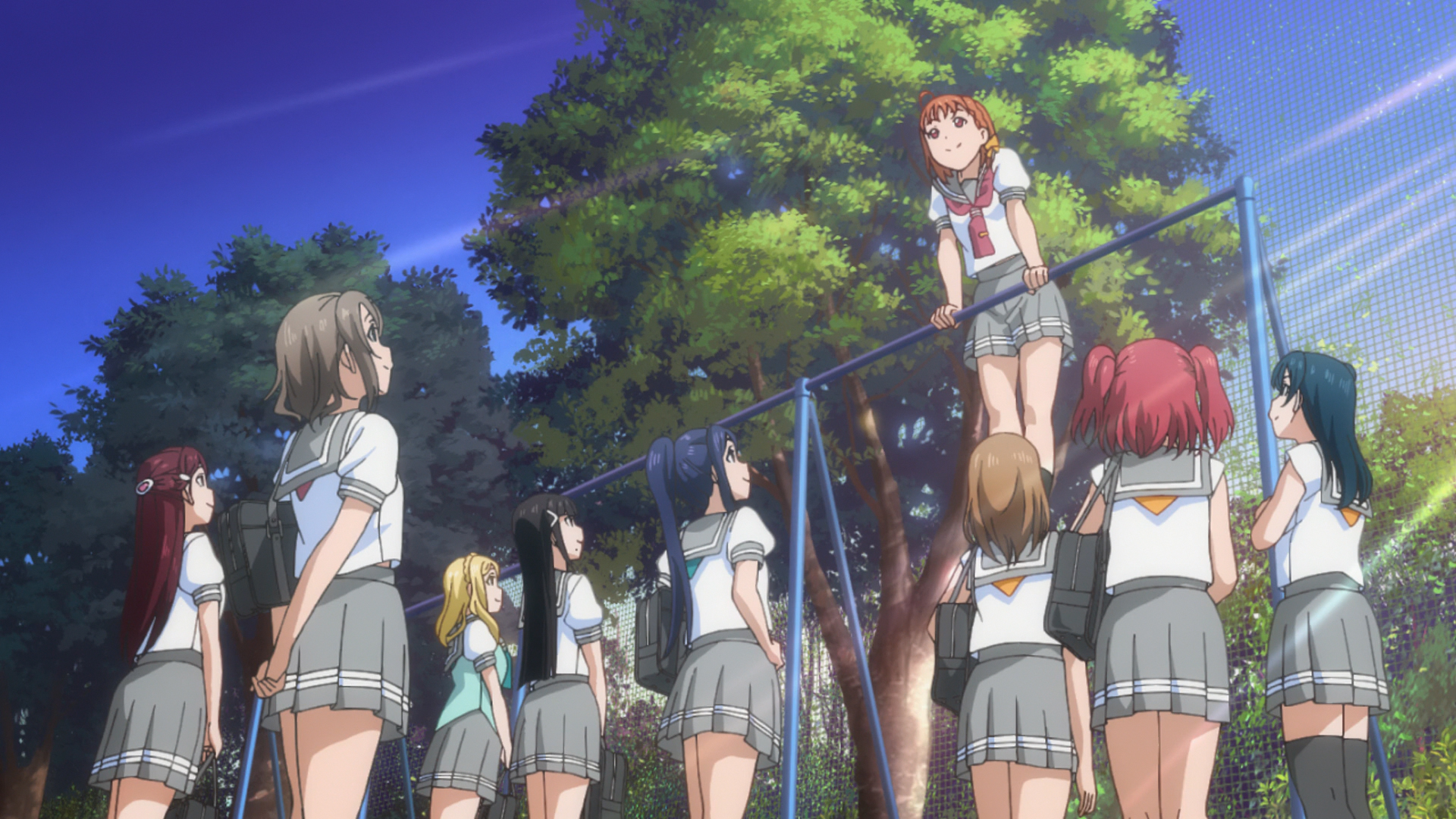
For long-time fans, coming into this second season will feel very familiar, and while I expect most will be overjoyed at getting back together with a wonderful cast of characters, some may be feeling increasingly tired of the “save the school from closure” plotline, which is pushed more into the forefront here after rumbling in the background throughout the first season.
While it’s one of the core plotlines of the entire franchise, I do think it works a lot better here than it did for the original series, feeling more structurally ingrained within the setting and story. Compared to the metropolis that is Tokyo, Uchiura is a small seaside town that’s quite out of the way, so the school not being able to attract new students actually makes sense. With this being a small close-knit community, you can really see that the school means a lot to everyone, which gives the girls a strong motivation for pursuing musical success in order to achieve their goal. As a result, it offers a lot of well-placed dramatic and emotional beats, with the run-up to the final deadline really piling on the tension as it’s really not clear which way things will go. You can tell every decision made and every performance given could make a difference, a feeling that pulls you in and really immerses you in the story.
However, that immersion is occasionally broken by some weird moments that open up plot holes or don’t quite make sense. A scene where a bus flies into the sky might seem symbolic, but just looks glaringly out of place, while the girls’ attempt to get to a live performance in time by taking a shortcut through a mikan orchard doesn’t quite make sense when Chika’s family has access to a pickup truck. These are just small things, but I think they’ve tried to overdramatize certain scenes a bit too much.
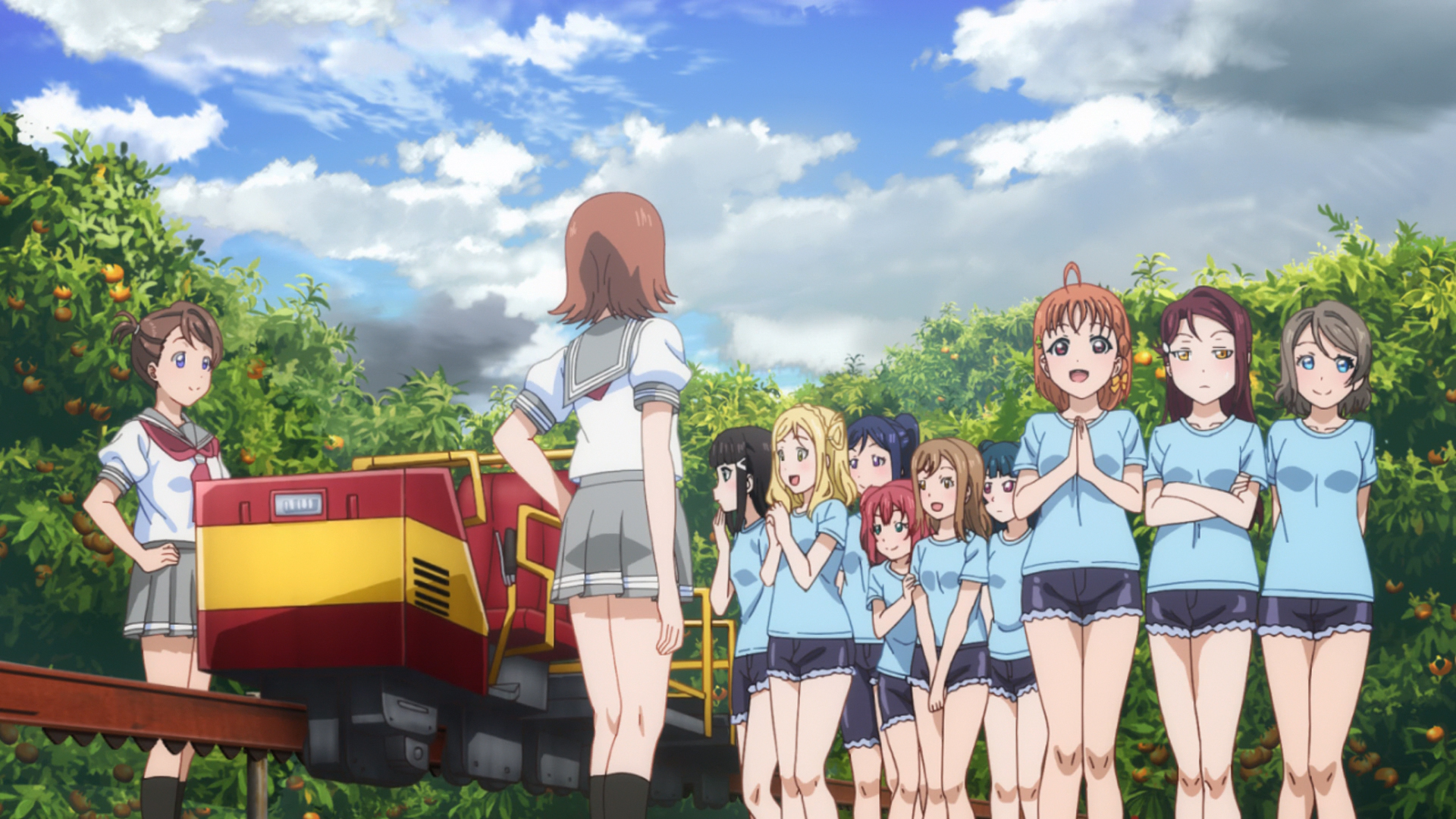
Despite this, it’s really the characters that make this show shine. I certainly love this cast a lot and if they mean anything to you, there are definitely moments in here that will have you in tears as it becomes quite an emotional ride. It’s not a complete tearjerker, though, as there are still a lot of fun episodes; some of them may feel a bit like filler, but they really help in pushing character development, as we dig deeper into the lives of all nine of the girls.
While I do think that some characters feel more fleshed out than others; Chika, for example, still feels quite bland in comparison to the rest of the cast; the series does try to give each of them some screen time; from episodes around the first years getting to know the third years better, to Yoshiko and Riko having to look after a lost dog, and even, yes, dealing with the graduation of third years. So, while there are definitely characters that get a certain focus – Ruby for example gets a fantastic arc in the latter half – there’s still plenty to enjoy no matter who you are a fan of.
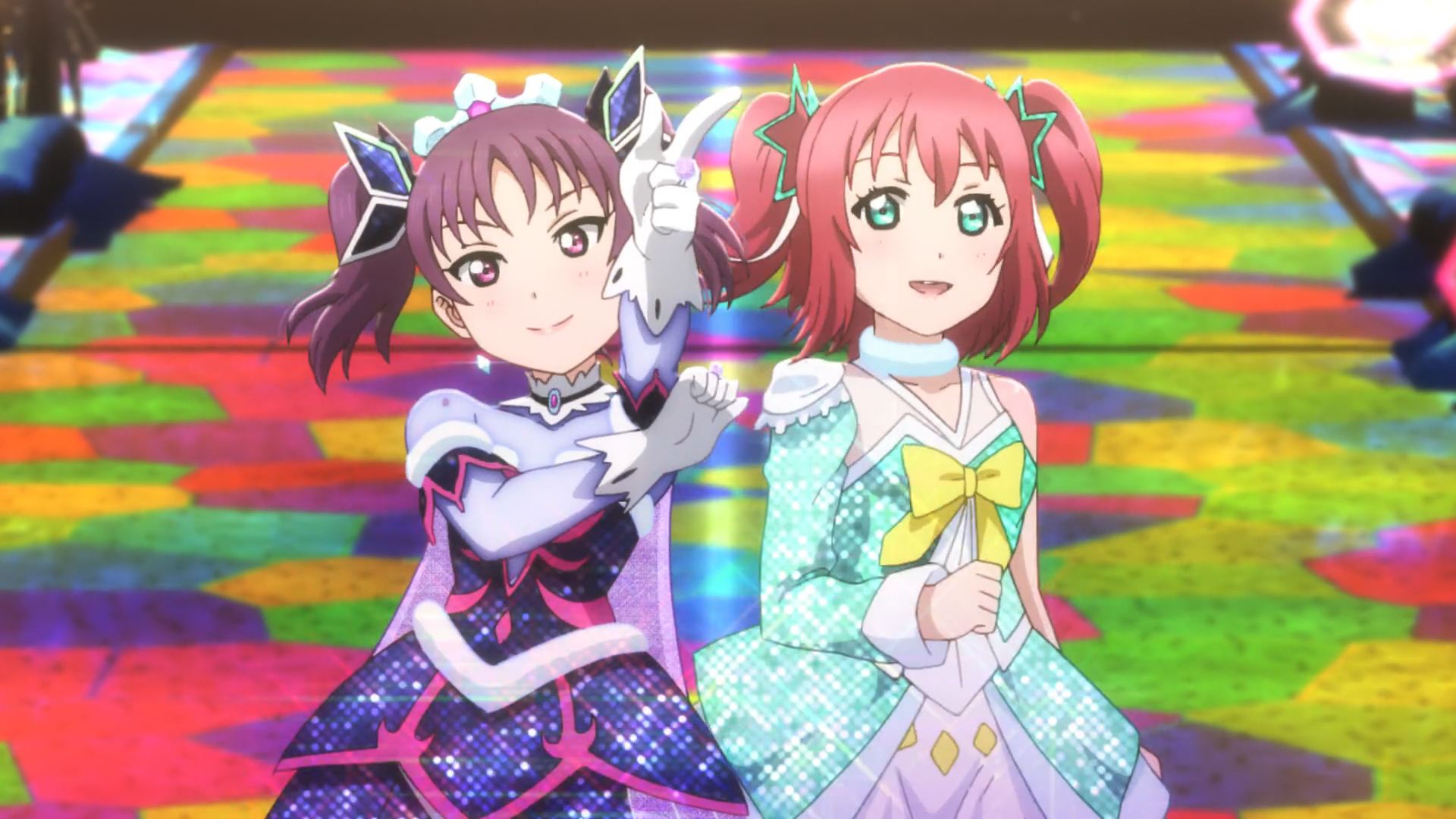
In terms of visuals this is still one good-looking show, with Sunrise continuing to produce some great animation and character work. I really like the close-up shots that show extra details, like lips being clearly visible or dripping perspiration, while the CGI dance sequences increasingly blur into the 2D animation.
What’s really impressive though is the work put into backgrounds and setting. While it may be difficult to tell if you haven’t been there, the series gives a picture-postcard representation of Numazu and Uchiura with some great attention to detail. While they do use some artistic license for the story, such as the ferry pier being open to the public and the school’s sports ground missing its enclosing fence; it’s incredible how close they get to the real thing.

In addition, the show’s music remains strong throughout, building on the catchy idol songs featured in the first season with flashy and energetic tracks such “MY Mai ☆ TONIGHT” and “MIRACLE WAVE” to songs that carry more emotional weight such as “WATER BLUE NEW WORLD” and “WONDERFUL STORIES”. The performances of these songs can be incredible to watch and often use their setting really well, particularly with “Awaken the power” using the snowy streets of Hakodate at Christmas time to great effect. They also feel more balanced throughout the show, coming up every two or three episodes, unlike the first season where they were concentrated in the second half.
Meanwhile, Tatsuya Kato’s rousing score generally fits the series well, although the large crescendo piece that’s used a few times throughout the series can be a bit much and sometimes overstates what’s going on on-screen.

Anime Limited’s release of the series comes with all thirteen episodes, featuring both the subtitled Japanese original audio and the English dub. While the Japanese dub is pretty great and helps make each character unique, the English dub often struggles to reflect each character’s unique personality; with voices that feel very flat and bland, robbing some of them of their charm. They’ve certainly tried to match what the Japanese audio does, but it just doesn’t quite fit, for example with Hanamaru’s “zura” sentence-ender feeling a bit out of place; however I will say that swapping Mari’s random use of English for random use of Italian actually works fine as it reflects her part-Italian heritage, rather than just her spending time in America. I’d also give praise to Sarah Wiedenheft, whose interpretation of Ruby is probably the closest fit out of all the characters, reflecting her quiet and timid personality.
On-disc extras include the standard promotional videos, textless opening and ending and some trailers, while the collector’s edition box houses a digipak, a poster and an art card for each of the main characters.
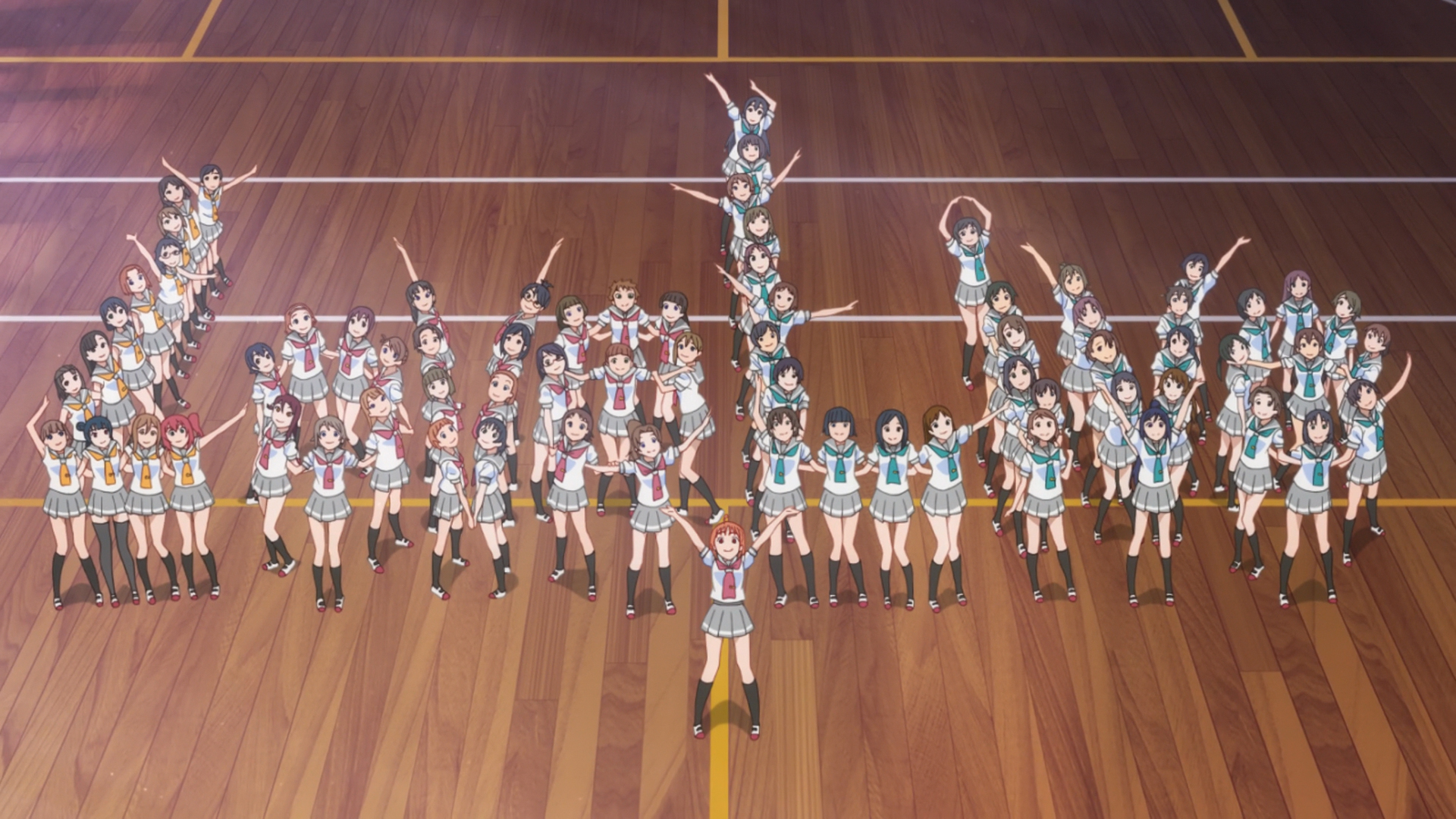
Overall, the second season of Love Live! Sunshine!! offers a very satisfying conclusion to the series as it emerges out of the shadow of its predecessor, taking its own direction with a familiar story and allowing it to show its full potential. Despite it being, at times, a bit over-dramatic and having a disappointing English dub, this is a great series with a charming cast of characters, great animation, and catchy music that fans of the franchise are sure to love.


